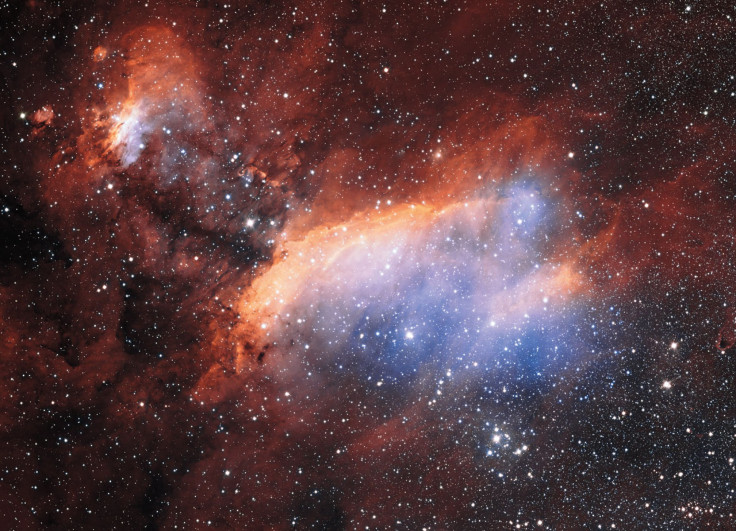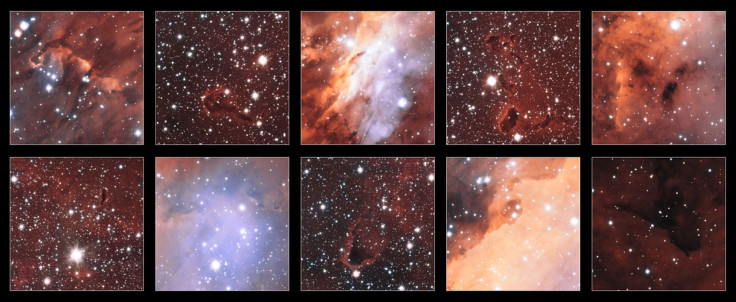The Prawn Nebula Is A Massive Stellar Nursery Teeming With Young Stars [PHOTOS]
Stellar nurseries are molecular clouds, regions with dense concentrations of dust and gas, with star-formation activity. The Prawn Nebula is one such stellar nursery, located 6,000 light-years from Earth in the constellation Scorpius.

Astronomers were able to capture the sharpest image of the Prawn Nebula using European Southern Observatory's VLT Survey Telescope, located at Paranal Observatory in Chile. The image was taken as part of the VPHAS+ survey searching the southern skies for star formation activity and stellar nurseries. Officially known as IC 4628, the Prawn Nebula is full of hot young stars and star clusters, groups of stars bound together by gravity. Collinder 316 is an open star cluster found within the nebula that contains between 50-100 young stars.
According to the astronomers, the young stars within the nebula are emitting a tremendous amount of ultraviolet radiation that strip electrons from hydrogen atoms, which later recombine and release energy, causing the clouds to glow. Elements produce different colored light during this process, and the ionization of hydrogen produces a red color when viewed in visible light. The Prawn Nebula is classified as a H II region, due to the high concentration of ionized atomic hydrogen. Other H II regions include the Orion Nebula, located in the constellation Orion, and the Tarantula Nebula, located in the Large Magellanic Cloud.

The Prawn Nebula is a relatively large stellar nursery, covering a distance 250 light-years, which astronomers say is the "equivalent to four times that of the full moon." The nebula is relatively dim, making it a difficult region for astronomers to study but the new image shows off plenty of star formation activity. In the new image, young stars can be seen as well as darker areas surrounding these objects, caused by the intense stellar wind of young stars pushing away nearby matter.
© Copyright IBTimes 2024. All rights reserved.












